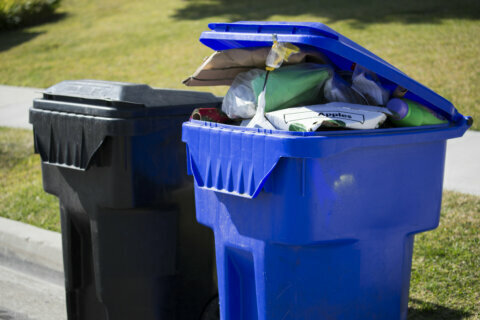
Listen, now, to an old man tell of the pre-internet age.
Amazon was a rainforest, phones were stuck to the wall and the Sears Wish Book was a holiday bible for kids.
It was a catalog mailed to American homes around Halloween or so, and had the most delightful pictures of toys that Santa would hopefully leave under the tree. More importantly, it was a way to show parents how awesome and inexpensive the Millennium Falcon was, for example.
The word “Amazon” means something different now, of course, and the sights of that lush capitalist ecosystem can be explored with an untethered, pocket-size phone.
The Wish Book is more or less history, too. Yet somehow, catalogs continue to thrive in an age of e-commerce. They still show up in our mailboxes and pile up on our dining room tables — before they end up in a bin.
About 7.5 billion business-to-consumer “books” are mailed to consumers a year, estimates Hamilton Davison, president and executive director of the American Catalog Mailers Association.
Why? “Because they work,” said Davison. He cited their research, which shows catalogs are effective not only with boomers but also with millennials.
“You can’t make me open your email,” he said. “You can’t make me go to your website. You can’t even make me go to your retail store. But you can send, uninvited in my home, a large format mail piece that I have to pick up and give you 300 milliseconds of mind share as I look at it and decide, ‘Am I going to read it or recycle it?’”
“And in that third of a second … you can invite me in. And that, in fact, is what happens.”
Though the internet is great for shoppers who know what they want, Davison said, it’s not great for browsing. Catalogs, on the other hand, provide what he called “a recreational shopping experience that many people find very pleasurable.”
Among the WTOP.com readers who have weighed in on the topic, some indeed appeared to be in the pro-catalog camp.
“I don’t order anything from them, but our daughter enjoys looking through them (as I did as a child also!)” Amanda Campbell wrote in an email.
“Catalogs let us imagine the possibilities and draft a proper list to Santa,” wrote Jennifer McIvor.
Now, If you’ve had your eyebrows raised for the last few paragraphs, you’re not alone. Most who chimed in had a decidedly negative take.
“Received about 100 all in the trash. Such a waste,” Lisa Flynn wrote in an email.
“No need for them, too many and most just go into recycling. Such a waste!” tweeted NBC Washington’s Doug Kammerer.
How much of a waste, though? Not as much as you might think. One D.C.-area waste and recycling company, Republic Services, sees “significantly more discards specific to recycling” from Thanksgiving to New Year’s, said Pete Keller, vice president of recycling and sustainability.
Among its 125,000 local customers, Republic collects up to 15% more recyclable materials during the holiday period, he said, “and a big portion of that would be the catalogs.”
This “mixed paper” isn’t necessarily going into a landfill. It generally has good fiber content, he said, and can be reincarnated at a paper mill.
“We’re moving it to market and generally speaking, not really getting paid for it, but it’s being recycled,” Keller said. “… Whether they’re making liner board for new cardboard boxes or tissue paper or other forms of packaging, that material is being recycled.”
So there’s a chance that the catalog you threw out showed up months later containing an Amazon order, which brings us to what keeps waste and recycling professionals like Keller much busier during the holidays. More e-commerce means processing more cardboard from small boxes and less cardboard from big box stores and distribution centers.
“We used to get a lot of really big boxes, and now we get a lot of really small boxes, and that requires us to kind of change our equipment and the way that we process material,” he said.
And while all that holiday detritus gets recycled, understand that the people who send catalogs aren’t just flooding mailboxes haphazardly. There’s an analytical, quantitative element to their work, Davison said, because they work on tight margins.
To that point: “Every square inch is planned out and thoroughly thought through and, in fact, quantified and scored after the fact, so that the next publication can be even more effective,” he said. Catalog senders also use co-op databases, which is why you get catalogs from a new, unknown retailer that’s somehow similar to one you know and love.
“Our goal is to try to be there when you want us and not be there — that’s waste — when you don’t want us,” he said, “and of course that’s quite a tall order. I think over the next couple of decades, we’ll continue to improve our level of sophistication and targeting, both with products and with recipients.”
Many probably hope that’s not wishful thinking.







